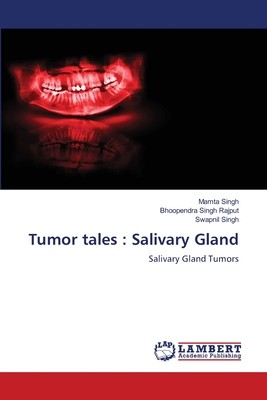
- We will send in 10–14 business days.
- Author: Mamta Singh
- Publisher: LAP Lambert Academic Publishing
- ISBN-10: 6208422981
- ISBN-13: 9786208422981
- Format: 15.2 x 22.9 x 0.5 cm, minkšti viršeliai
- Language: English
- SAVE -10% with code: EXTRA
Reviews
Description
Salivary gland tumors are known for their remarkable histologic diversity. This is essentially important due to the interplay of a variety of cells, which include basal, luminar, acinar, and myoepithelial cells. classifying tumors of the salivary glands can be challenging due to their heterogeneous grouping of lesions with significant morphologic diversity. Salivary gland enlargement is less often caused by neoplasia than by inflammatory or other non neoplastic conditions. Less than 3% of all tumors of the head and neck are salivary gland neoplasm. Of all neoplasms of salivary gland origin about 85% occurs in parotid gland. Of these 80% are benign, whereas only about 50% of the submandibular tumors and approximately 25% of the minor salivary gland neoplasm are benign. Although extremely rare, tumors of the sublingual gland are almost always malignant.
EXTRA 10 % discount with code: EXTRA
The promotion ends in 23d.10:51:03
The discount code is valid when purchasing from 10 €. Discounts do not stack.
- Author: Mamta Singh
- Publisher: LAP Lambert Academic Publishing
- ISBN-10: 6208422981
- ISBN-13: 9786208422981
- Format: 15.2 x 22.9 x 0.5 cm, minkšti viršeliai
- Language: English English
Salivary gland tumors are known for their remarkable histologic diversity. This is essentially important due to the interplay of a variety of cells, which include basal, luminar, acinar, and myoepithelial cells. classifying tumors of the salivary glands can be challenging due to their heterogeneous grouping of lesions with significant morphologic diversity. Salivary gland enlargement is less often caused by neoplasia than by inflammatory or other non neoplastic conditions. Less than 3% of all tumors of the head and neck are salivary gland neoplasm. Of all neoplasms of salivary gland origin about 85% occurs in parotid gland. Of these 80% are benign, whereas only about 50% of the submandibular tumors and approximately 25% of the minor salivary gland neoplasm are benign. Although extremely rare, tumors of the sublingual gland are almost always malignant.


Reviews